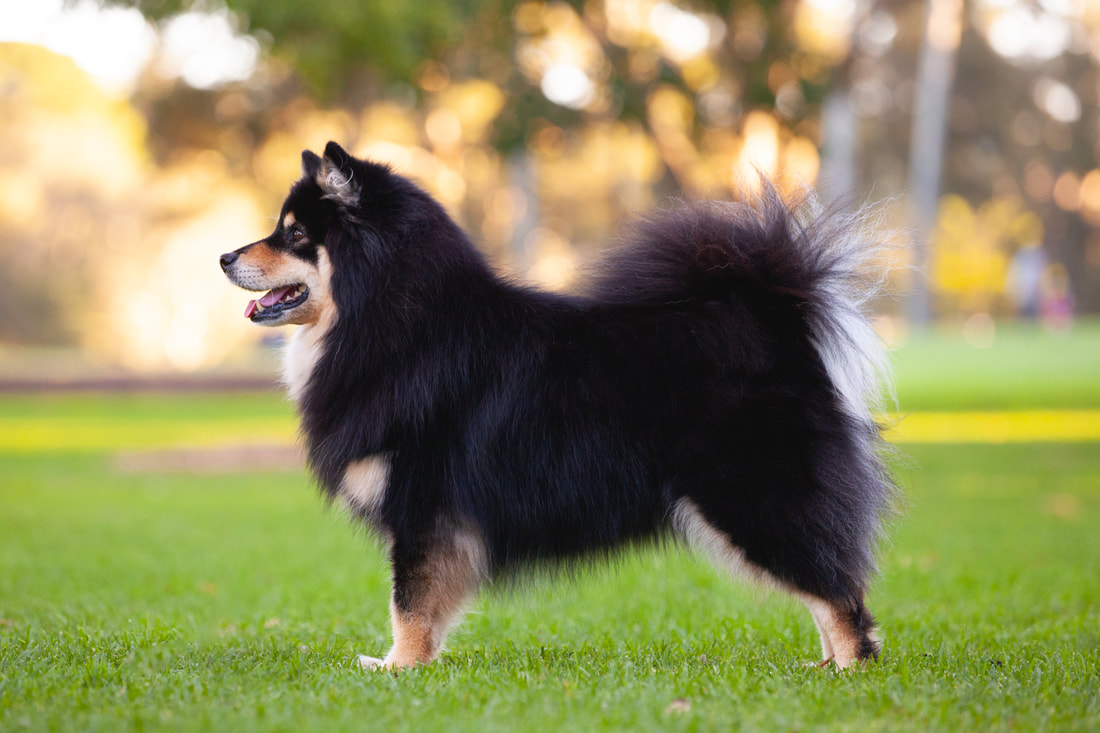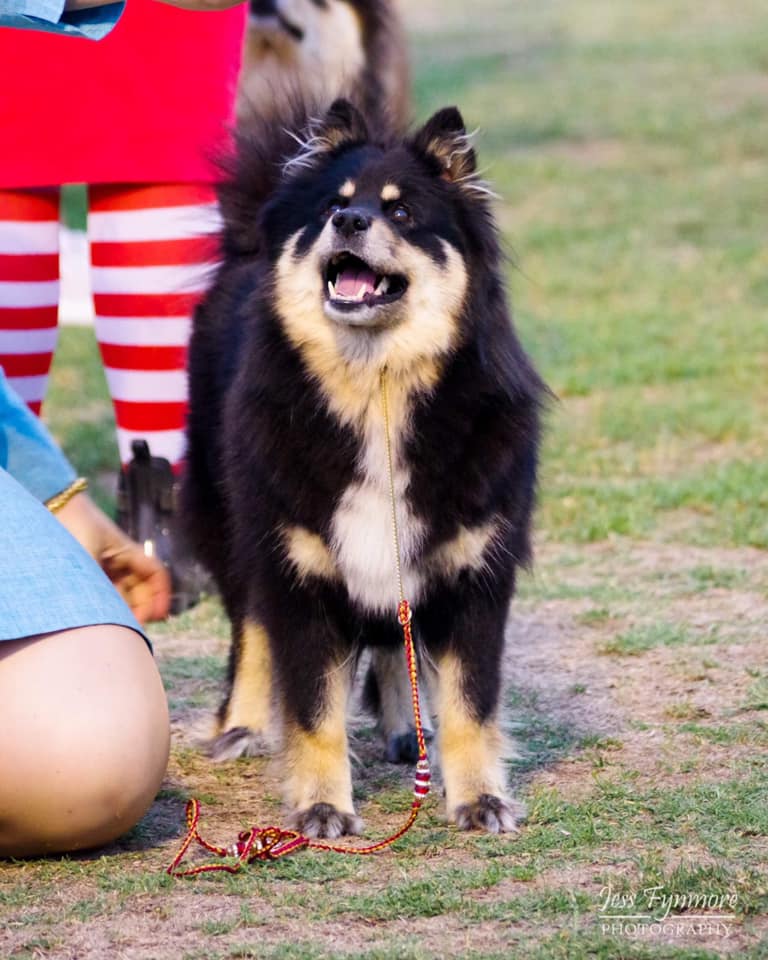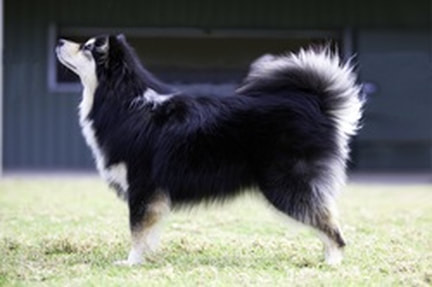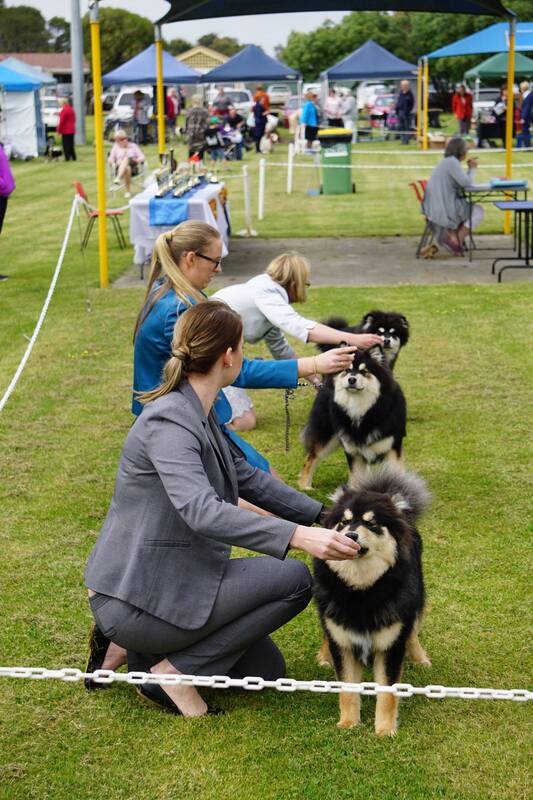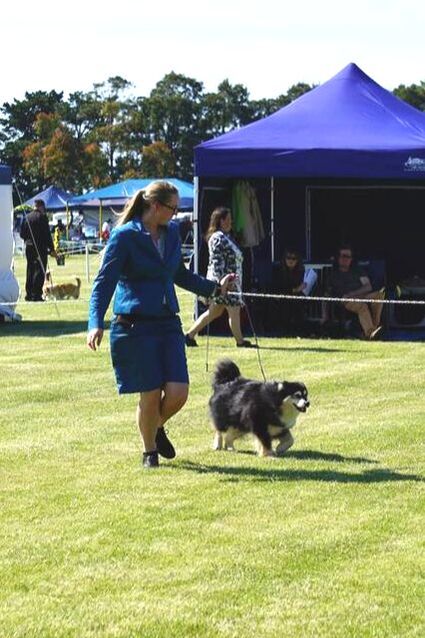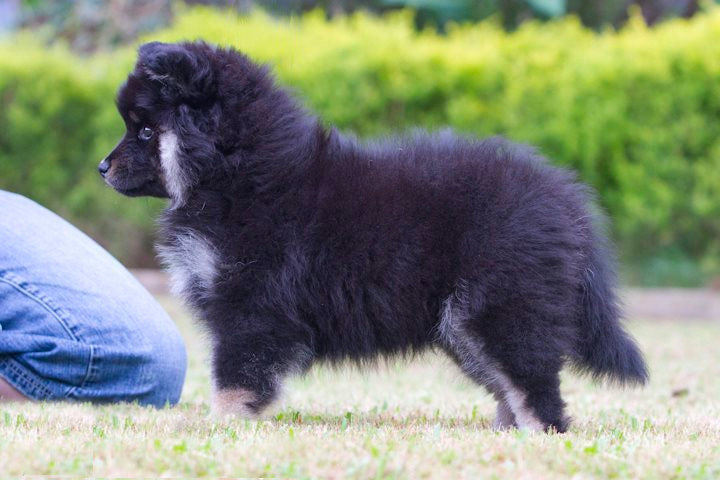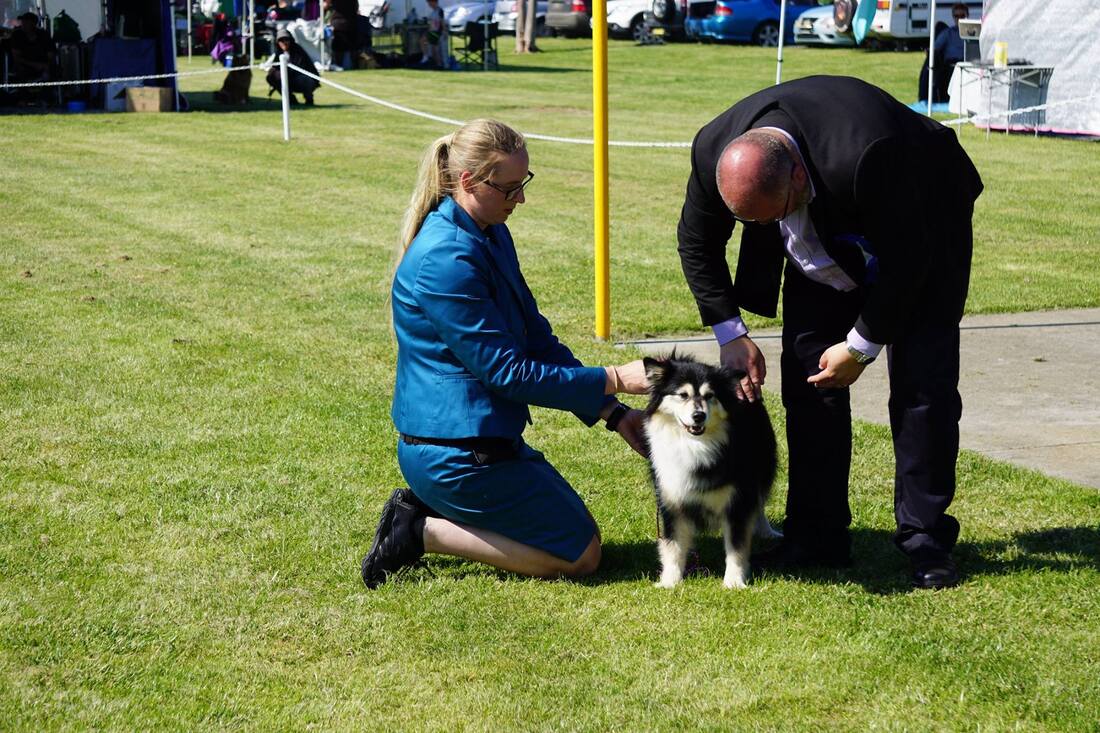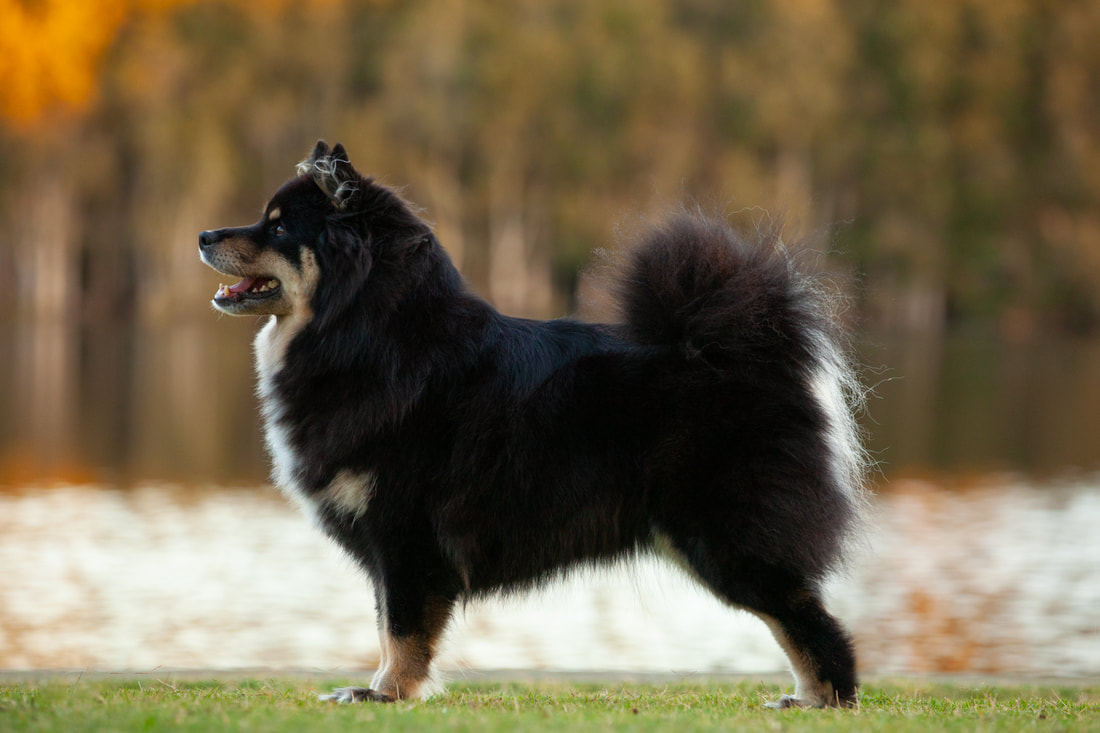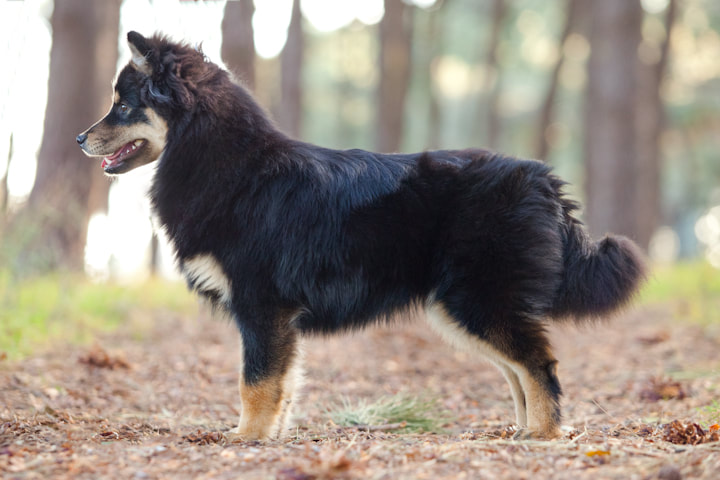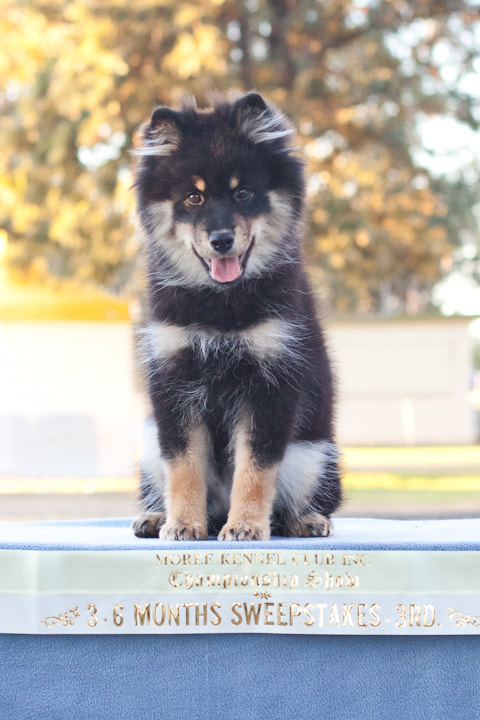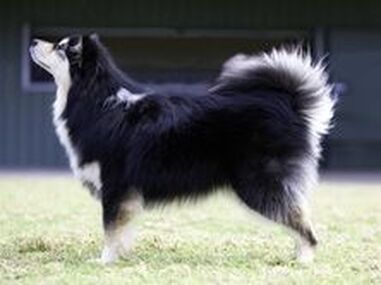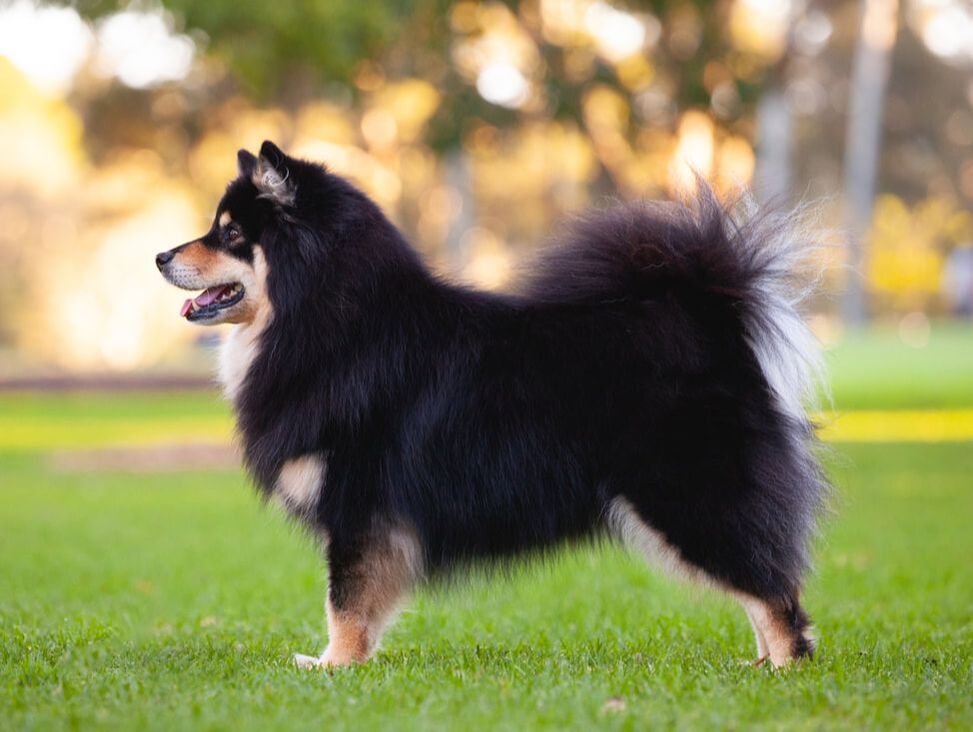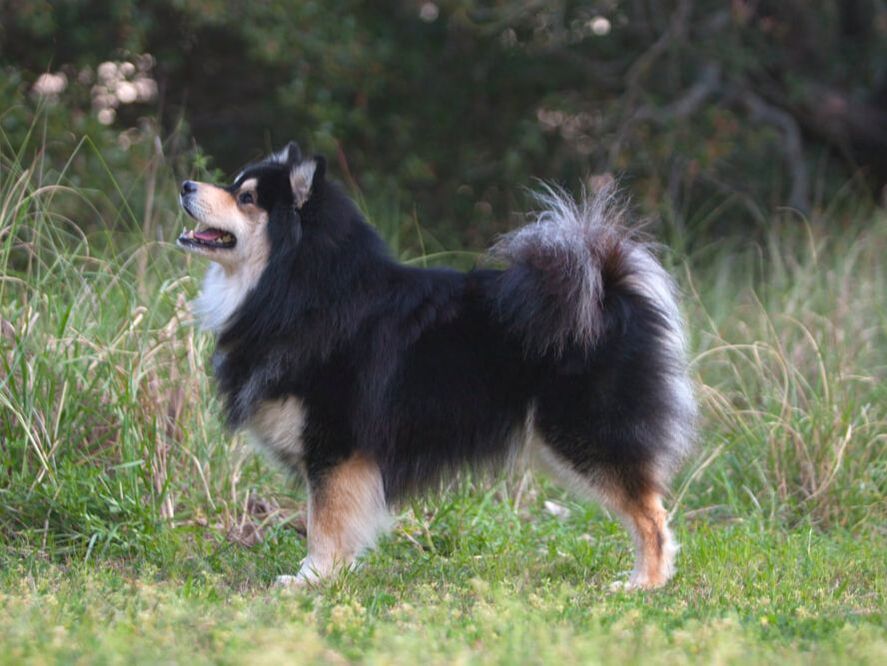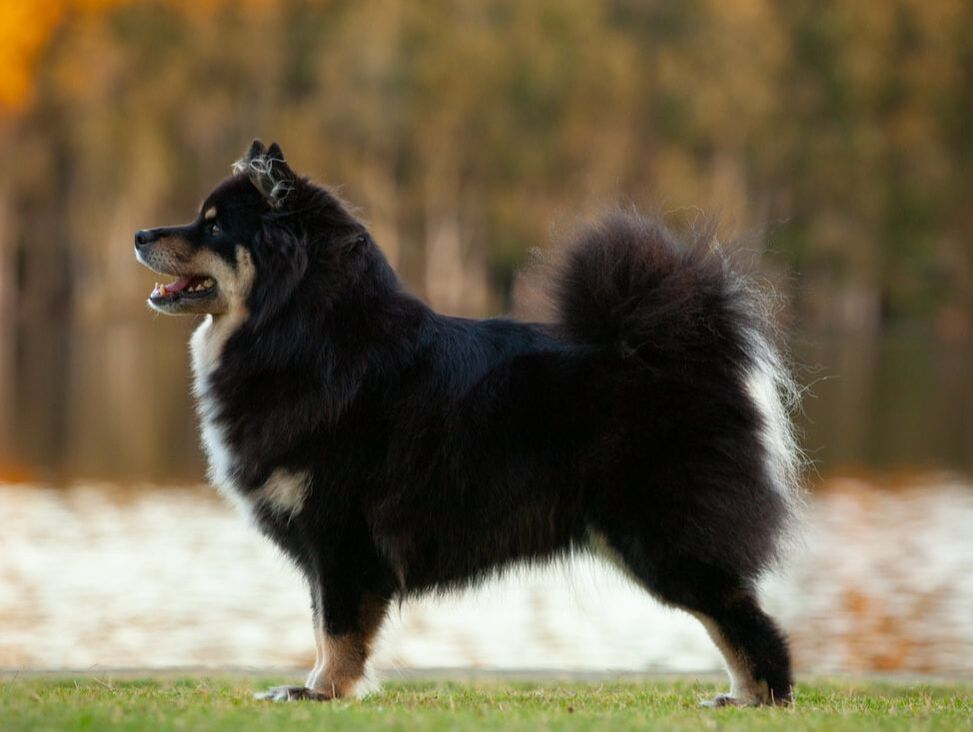The Show RingOne of the most common activities that breeders participate in is conformation showing. Each ANKC recognised breed has a breed standard which describes how the ideal dog of that breed should look. At a conformation show, dogs are examined to see how well they conform to that ideal, with the dog who, in the judge's opinion, is the most correct, taking out the Best of Breed award.
Dogs are judged on the move, on the stack (for most breeds, this is a 4 square standing position) and by feel. Judges will run their hands over the dog while they stand to check key structural points. Dogs are able to be shown at almost any age, the only exception being puppies under the age of three months. They must however, be purebred and registered with the ANKC on the main register if they are entire, or the neuter register if they are desexed. The ANKC allows neutered dogs to compete in the show ring, however, they do not compete against entire dogs and have their own points system and titles. Baby puppies (those under the age of 6 months) are not eligible for title points so are judged separately from the older dogs.
|
Quick Facts
|
Training level required: ☆ (easy)
Training type: private lessons/at home Equipment cost: $ (inexpensive) |
Overseeing body: Australian National Kennel Council
Minimum age for competition: 3 months Breed restrictions: Open to ANKC recognised breeds |
What equipment do I need?The only equipment truely needed to enter the show ring is a collar/lead, a number holder and a pair of closed in shoes, however, as with many dog activities, there are options at either end of the budget scale.
For a basic set up to show your dog, you will need:
|
How much training is needed?Conformation showing is the only dog sport you can compete in from 3 months of age so it doesn't take much training to have a dog who you COULD put in the show ring, but training a dog to be polished in the show ring takes quite a lot of work.
Much of the training for the show ring requires training the handler - a knowledgeable handler can often take a new dog into the ring without training and still make them presentable, so show training lessons are as much about polishing the handler as they are about polishing the dog. Dogs need to be trained to move around the ring in the correct gait and to "stack" (stand) with their feet in the right place or be "hand stacked" where the handler is able to move the feet of their dog into the correct position so they stand "four square" (front and back feet aligned with one another). They also need to be familiarised with a judge leaning over them to do things like check their teeth, and in the case of dogs, to have their testicles checked (as a dog having 2 testicles is a requirement for dogs) which can be quite confronting for young dogs in particular. Small breeds and very young dogs are often judged up on a grooming table so judges can properly examine the dog. They may need to be exposed to the table several times prior to going into the ring so they can be confident enough to happily stand on the table. |
Titles
There are five ANKC show titles dogs can achieve, separated into two separate streams - one for entire dogs and one for desexed dogs. Dogs accrue points towards these titles, but the title points are not interchangeable between the two streams. In the entire dog ring, there are 3 titles available - the Championship is awarded to dogs who have earned 100 points, the Grand Championship to dogs who have earned 1000 points and the Supreme Championship to dogs who have earned 1000 points, AND won 3 all breeds best in shows under 3 different judges or 10 best in group or multi-breed/breed specialty best in shows under 10 different judges.
In the neuter ring, there are 2 titles available - the Neuter Championship is awarded to dogs who have earned 100 points, and the Neuter Grand Championship to dogs who have earned 1000 points.
In the neuter ring, there are 2 titles available - the Neuter Championship is awarded to dogs who have earned 100 points, and the Neuter Grand Championship to dogs who have earned 1000 points.
|
|
Competing in the Show Ring
How it works
The show ring is can be quite confusing the first time you attend a show if you don't understand how the judging works. There are many classes that dogs are judged in and dogs may enter the ring multiple times to find the eventual winners so at times it can appear very unorganised. We always recommend attending a show with someone who understands the process, as this will make it much easier for a new owner to navigate.
In the ring, dogs are grouped first by gender - all the males (except neuters) are judged first, followed by the females. Each gender is broken down into classes, mostly based on their age but also on whether they have a championship and where they were born.
Stage 1 - Breed Classes
In the ring, dogs are grouped first by gender - all the males (except neuters) are judged first, followed by the females. Each gender is broken down into classes, mostly based on their age but also on whether they have a championship and where they were born. The dogs in each class are judged against the breed standard and if numbers allow, at least a 1st and 2nd place winner is chosen, though if there are enough dogs in the class, judges will generally place their first five place getters.
Stage 2 - Challenge Certificates
The 1st place winners from all the classes (except baby puppy) are then brought into the ring together to run off to find the best male (Dog Challenge Certificate "DCC"). The dog who was awarded the 2nd place in the class the DCC winner came from is then brought into the ring to run against the 1st place winners from the other classes to find the Reserve Dog (RDCC) winner. This process is then repeated for the females to find the best female (Bitch Challenge Certificate "BCC") and Reserve Bitch (RBCC) winners. It is not uncommon for the DCC/BCC winner and RDCC/RBCC winner to come from the same class, as some classes tend to be more competitive than others (Australian Bred and Open for example, as these usually contain adult dogs).
Stage 3 - Best of breed
The DCC and BCC winners are then run off against one another to find the Best of Breed (BOB). If the DCC winner takes BOB, the RDCC winner is then brought into the ring to compete against the BCC winner and vice versa to find the Runner Up To Best Of Breed (RUBOB) winner. 6 title points are awarded to the DCC and BCC winners, as well as 1 point for every dog or bitch they beat. The BOB winner also recieves 1 point for every dog of the opposite sex they beat, up to a maximum of 25 points.
Stage 4 - Class winners
Once the Best of Breed and Runner up to Best of Breed are found, the winners of the individual classes from stage 1 are run off against one another to find the winner of each of the classes of breed - for example, the best minor puppy dog is run off against the best minor puppy bitch for Best Minor Puppy of Breed. The Best of Breed is automatically awarded the class they were in as they have already beaten all the other
Stage 5 - Best In Group
The ANKC has seven groups of breeds, all organised according to their original purpose:
Stage 6 - Classes in Group
Once the group has been judged and the best and runner up in group have been found, the Baby Puppy of Breeds are brought in to run off against one another to see who will win the Best Baby In Group award. This continues up through the classes with the exception of the classes the Best In Group and Runner up to Best in Group came out of, as they are automatically awarded to those dogs. If they both come out of the same class, the Best in Group winner is awarded the class.
Stage 7 - Best In Show
Finally, the best in group winners are taken into the ring to compete for the coveted Best in Show (BIS) award. Once the BIS winner has been found, the RUBIG winner from the group the BIS winner came from is brought in to run against the BIG winners from the other 6 groups to find the Runner Up To Best In Show (RUBIS) winner.
Stage 8 - Classes in Show
Once the BIS has been judged and the best and runner up in show have been found, the Baby Puppy in group winners for each of the 7 groups are brought in to run off against one another to see who will win the Best Baby Puppy In Show award. This continues up through the classes again with the exception of the classes the Best In Show and Runner up to Best in Show came out of, as they are automatically awarded to those dogs. If they both come out of the same class, the Best in Show winner is awarded the class in show.
Neuter
The neuter points system works in a similar way, however, it is still uncommon for shows to offer multiple neuter classes, instead running only an open neuter class for dogs and for bitches, and then running the winner of these classes off for the Best Neuter Of Breed winner. The same idea applies, with the best neuter dog and best neuter bitch being awarded 6 points, plus one point for every dog/bitch they beat. The best neuter of breed is also awarded the points for the opposite sex. The neuter in group and neuter in show awards are organised under the same system.
In the ring, dogs are grouped first by gender - all the males (except neuters) are judged first, followed by the females. Each gender is broken down into classes, mostly based on their age but also on whether they have a championship and where they were born.
Stage 1 - Breed Classes
In the ring, dogs are grouped first by gender - all the males (except neuters) are judged first, followed by the females. Each gender is broken down into classes, mostly based on their age but also on whether they have a championship and where they were born. The dogs in each class are judged against the breed standard and if numbers allow, at least a 1st and 2nd place winner is chosen, though if there are enough dogs in the class, judges will generally place their first five place getters.
Stage 2 - Challenge Certificates
The 1st place winners from all the classes (except baby puppy) are then brought into the ring together to run off to find the best male (Dog Challenge Certificate "DCC"). The dog who was awarded the 2nd place in the class the DCC winner came from is then brought into the ring to run against the 1st place winners from the other classes to find the Reserve Dog (RDCC) winner. This process is then repeated for the females to find the best female (Bitch Challenge Certificate "BCC") and Reserve Bitch (RBCC) winners. It is not uncommon for the DCC/BCC winner and RDCC/RBCC winner to come from the same class, as some classes tend to be more competitive than others (Australian Bred and Open for example, as these usually contain adult dogs).
Stage 3 - Best of breed
The DCC and BCC winners are then run off against one another to find the Best of Breed (BOB). If the DCC winner takes BOB, the RDCC winner is then brought into the ring to compete against the BCC winner and vice versa to find the Runner Up To Best Of Breed (RUBOB) winner. 6 title points are awarded to the DCC and BCC winners, as well as 1 point for every dog or bitch they beat. The BOB winner also recieves 1 point for every dog of the opposite sex they beat, up to a maximum of 25 points.
Stage 4 - Class winners
Once the Best of Breed and Runner up to Best of Breed are found, the winners of the individual classes from stage 1 are run off against one another to find the winner of each of the classes of breed - for example, the best minor puppy dog is run off against the best minor puppy bitch for Best Minor Puppy of Breed. The Best of Breed is automatically awarded the class they were in as they have already beaten all the other
Stage 5 - Best In Group
The ANKC has seven groups of breeds, all organised according to their original purpose:
- Toys - small breeds that are primarily kept as companions and pets.
- Terriers - terrier breeds that were bred to hunt vermin.
- Gundogs - hunting dogs primarily used to hunt birds in a variety of settings.
- Hounds - hunting dogs primarily used for scenting or running down quarry.
- Working - herding breeds.
- Utility- working dogs who do not herd or hunt. These include large livestock guardian type dogs, large spitz breeds as well as guard, rescue and messenger dogs.
- Non-Sporting - dogs which cannot be defined by the other 6 groups. This includes dogs with multiple jobs (like the keeshond which is both a barge dog and general farm dog) and dogs whose jobs do not necessarily fall under the other categories, for example, the dalmatian which was originally a carriage dog.
Stage 6 - Classes in Group
Once the group has been judged and the best and runner up in group have been found, the Baby Puppy of Breeds are brought in to run off against one another to see who will win the Best Baby In Group award. This continues up through the classes with the exception of the classes the Best In Group and Runner up to Best in Group came out of, as they are automatically awarded to those dogs. If they both come out of the same class, the Best in Group winner is awarded the class.
Stage 7 - Best In Show
Finally, the best in group winners are taken into the ring to compete for the coveted Best in Show (BIS) award. Once the BIS winner has been found, the RUBIG winner from the group the BIS winner came from is brought in to run against the BIG winners from the other 6 groups to find the Runner Up To Best In Show (RUBIS) winner.
Stage 8 - Classes in Show
Once the BIS has been judged and the best and runner up in show have been found, the Baby Puppy in group winners for each of the 7 groups are brought in to run off against one another to see who will win the Best Baby Puppy In Show award. This continues up through the classes again with the exception of the classes the Best In Show and Runner up to Best in Show came out of, as they are automatically awarded to those dogs. If they both come out of the same class, the Best in Show winner is awarded the class in show.
Neuter
The neuter points system works in a similar way, however, it is still uncommon for shows to offer multiple neuter classes, instead running only an open neuter class for dogs and for bitches, and then running the winner of these classes off for the Best Neuter Of Breed winner. The same idea applies, with the best neuter dog and best neuter bitch being awarded 6 points, plus one point for every dog/bitch they beat. The best neuter of breed is also awarded the points for the opposite sex. The neuter in group and neuter in show awards are organised under the same system.
|
NSW Breeder Identification Number: B000685661 | Victoria Source Number: EE102260
Dogs NSW Member Number: 2100088743 |
© Pawformance 2023
|

